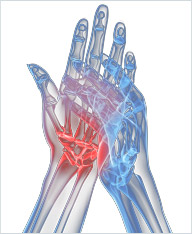
The doctors at APM&R are experts at diagnosing and treating pain, whether it is the temporary kind caused from injury or chronic pain caused from arthritis, fibromyalgia or an unknown cause. Physical medicine doctors make it their goal to decrease pain when treating any condition or helping patients recover from injury. Sometimes, however, pain becomes a primary, rather than secondary, issue that your doctor needs to address. While there are multiple treatments for pain, APM&R physicians always consider the whole person rather than focusing only on the painful area and offer non-surgical options for pain relief.
UPDATE ON OPIOID LAWS
WHAT PATIENTS NEED TO KNOW TO STAY SAFE WHEN TAKING OPIOID MEDICATIONS
New laws for the state of Michigan go into effect June 2018 which are meant to improve patient safety and reduce the significant rise in addiction and abuse of opioids. These new controlled substance laws require health care providers to follow specific guidelines when prescribing certain medications.
- Sign a patient consent form saying that your provider has reviewed with you the possible health risks of taking an opioid medication.
- Access the Michigan Automated Prescription System (MAPS) database which tells us what other controlled substance prescriptions you recently had filled so that we are aware of all medications you are taking that could interact with opioids.
- Frequently assess your need for the medication.
- Educate you that the new law may require you to be seen monthly to renew one or more of your prescriptions. For other medications, we may be able to see you every few months to renew your prescriptions.
Arthritis
Arthritis refers to more than 100 different diseases that cause pain, swelling, and limited movement in joints and connective tissues throughout the body. It is usually chronic, meaning that it lasts a lifetime. Specific causes for most forms of arthritis are not yet known. How the disease progresses also varies depending on the form of arthritis. The two most prevalent forms of arthritis are:
Osteoarthritis
A degenerative joint disease in which the cartilage that covers and protects the end of the bones in the joint deteriorates, causing pain and loss of movement as bone begins to rub against the bone.
Rheumatoid arthritis
A systemic disease that affects the entire body. It is characterized by the inflammation of membrane lining the joints, which causes pain, warmth, redness, and swelling. The chronic inflammation causes deterioration of the joint, pain, and limited movement.
Fibromyalgia, Myofascial Pain and Chronic Pain
Fibromyalgia, affecting some 5–10 percent of the population, is characterized by tight, tender muscles, usually sore points in the neck, shoulders, chest, back, knees and hips. Insomnia and depression often are associated with the condition. While it is benign and non-progressive, fibromyalgia is chronic. No specific cause is known, although it sometimes appears following trauma. Chronic pain affects some 80 million Americans and, following cancer and heart disease, is the third leading cause of physical impairment in the United States.
Diagnosis of fibromyalgia often involves ruling out other illnesses. Treatment is primarily exercise and may include some kind of medication. From low back pain and herniated discs to carpal tunnel syndrome and tendinitis, APM&R doctors seek to not only reduce and eliminate chronic pain, but also to prevent its recurrence.

